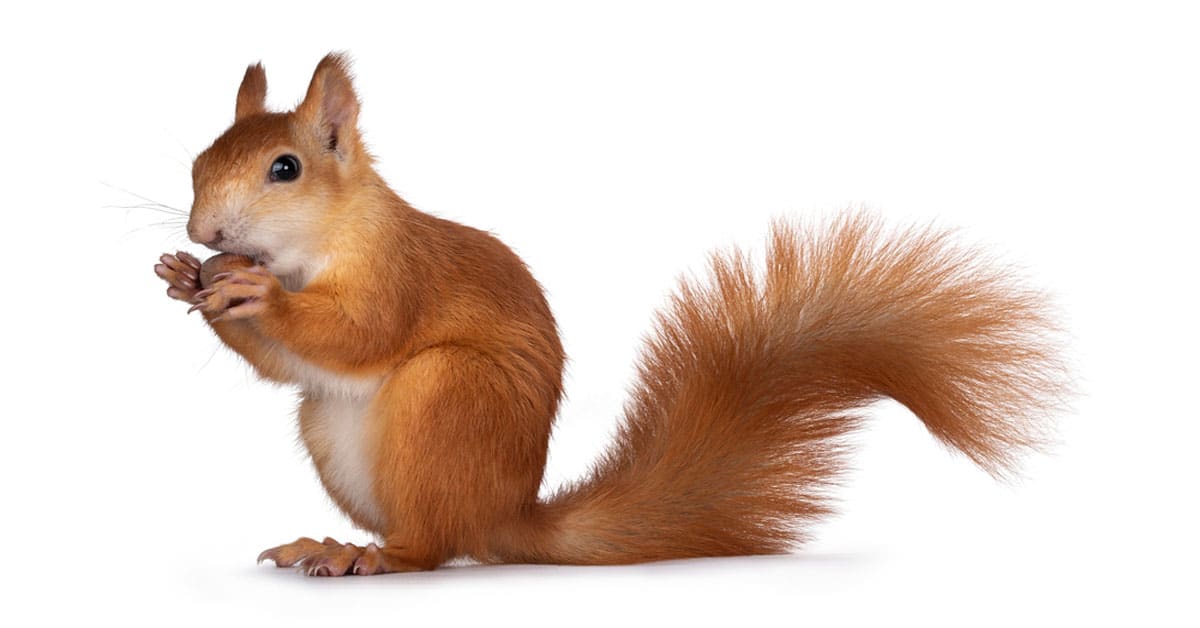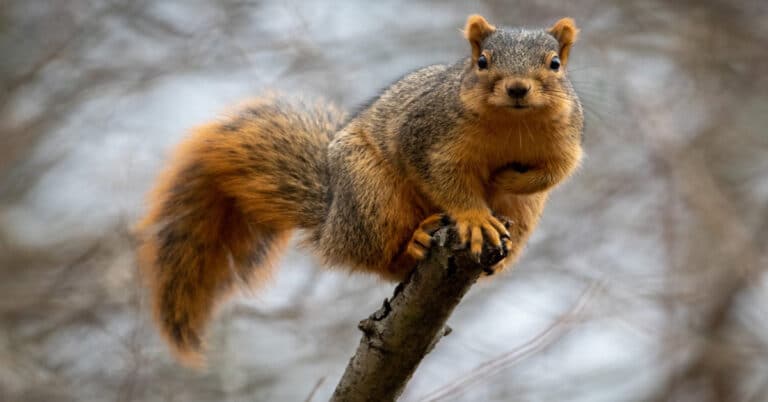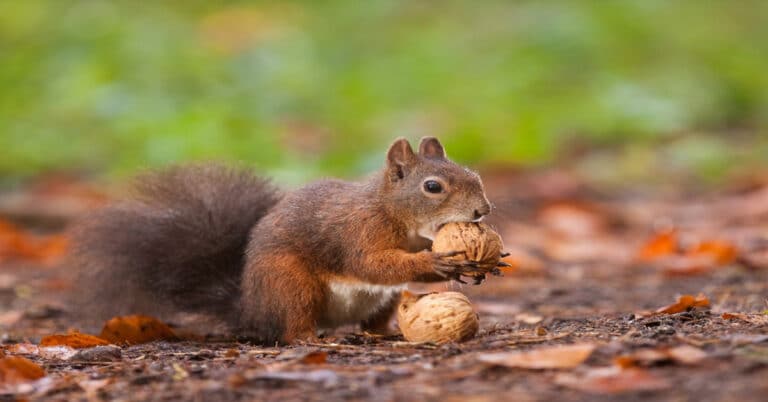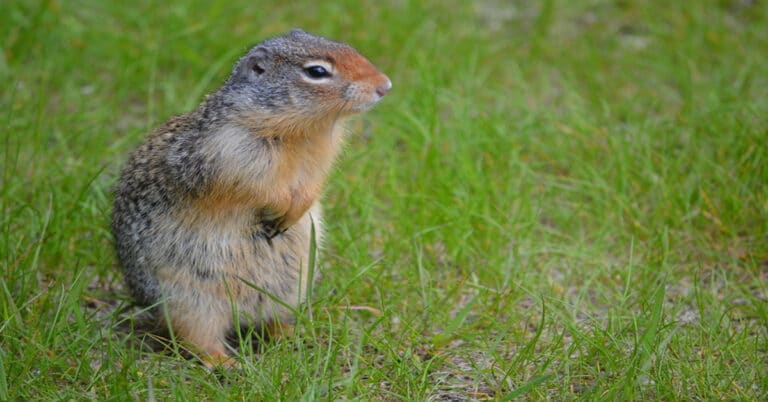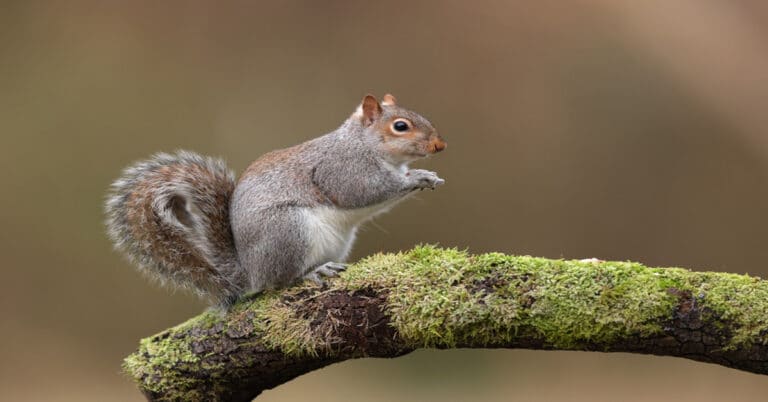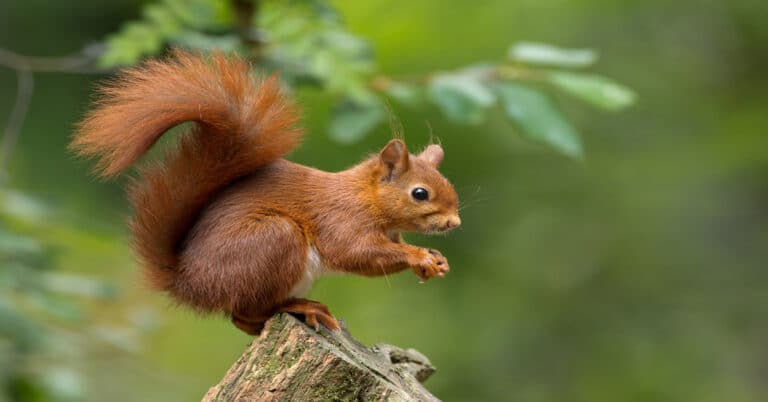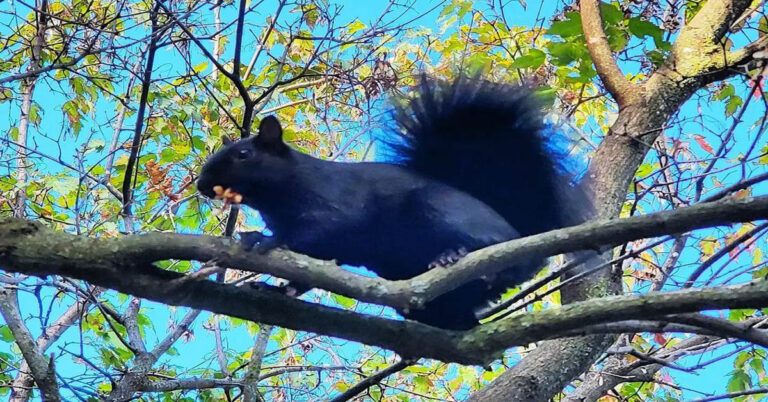Squirrel Life Cycle
All animals on Earth have the same life cycle; we are born, grow up, reproduce, and the cycle continues. However, the life cycles of different creatures are unique. We have all heard about swift, observant, and active animals – cute little squirrels. But what about the squirrel life cycle and lifespan?
Today, we’ll talk about the squirrel life cycle, how it differs from other rodents’ lifespans and how it varies among squirrel species. If you want to know more about these rodents, then you’re at the right place.
General Information About Squirrels
There are more than 200 squirrel species in the world. Squirrels are tiny mammals belonging to the Rodentia order and family Sciuridae. They are closely related to rodent species like mice and rats.
- Squirrels have big, bushy tails.
- They are small to medium-sized.
- They have big, dark eyes and tiny ears.
- The thickness of a squirrel’s short, silky, and soft hair varies depending on the species.
- The color of a squirrel’s fur might be gray, white, brown, black, red, or yellow.
Squirrels can firmly grasp tree limbs because of their razor-sharp claws. They can freely climb up and down trees with their hind legs. Their back legs may be turned around.
How Long Do Squirrels Live?
On average, squirrels live for 2 to 6 years. However, a squirrel’s life span can vary greatly due to their susceptibility to predators and high mortality rates. A squirrel’s life span importantly depends on the species. For instance, although Western gray squirrels live almost ten years in the wild, ground squirrels only survive three years on average.
Squirrels reared in captivity have been documented to live for almost two decades. However, this is only true for some species. For wild squirrels, lower quality of life is often caused by diseases, predators, and injuries.
While some squirrel species can’t survive for very long due to predators, others can go due to location and genetics. This does not imply that they are wholly defenseless, though. To survive year after year, they make use of their enhanced senses.
Squirrel Mating Habits
Instead of engaging in elaborate courtship rituals, squirrels engage in an acrobatic mating chase until one of the male squirrels wins. A successful man mates with other males. A male squirrel can detect the beginning of estrus in a female. When they find a female, the men congregate nearby and wait for her to become receptive.
When the female is prepared to mate, she bolts, and the males begin to pursue her. The dominant male usually gets lucky and mates with the female first. A female-only experiences estrus for a short time. From 1 to 25 minutes are spent mating. A single female can have many mating relationships that last from two days to several weeks.
Even if numerous guys have the opportunity to mate with the female, only one male is the father of her offspring. Before engaging in sexual activity with the female, the male uses his penis to block her vagina with something resembling non-seminal wax.
Breeding Season
Each species of squirrel has a different breeding season, which tends to fluctuate. However, most female squirrels start their oestrus cycle at the beginning of every year. Most squirrels typically reproduce twice a year, once in late June or early August and again between December and February. However, there are various types of squirrels, including flying, tree, and ground species, and each gives birth at a different time of the year or during a different season.
Early spring and early summer are the two prime times for squirrels to give birth. Depending on the species, a female squirrel gives birth after a pregnancy of 23 to 65 days. After one year of age, a female squirrel is ready to reproduce and can mate once or twice every new year.
Males can mate numerous times a year and are always prepared for mating. Additionally, one male can father more than one female throughout a breeding season. A list of the several species of squirrels’ breeding seasons is shown below.
Squirrel Life Cycle
Now let’s get to know what the squirrel life cycle looks like. The gestation period for female squirrels, with one to nine young born into the leafy den, typically occurs in a tree hollow. The squirrel goes through three stages: newborn, juvenile, and adult.
Newborns
The squirrel life cycle starts when a little squirrel is born and lasts until it reaches a month. These infants remain hairless and blind during that time. They are only an inch long on average as well. Newborn squirrels spend most of their first-month sleeping and entirely rely on their mothers for food. Mother squirrels do all their power to keep their young warm, cramming their den with blankets and living things.
Baby squirrels visit their mothers in their den after two months. During this time, they can travel independently but stay near their family. A squirrel will spend the entire cold season with its mother if born before winter. Squirrels of all ages, but especially young ones, find the winter to be a challenging season. Most squirrels spend the cold months in their dens.
Even though they are rather young, a newborn squirrel between the ages of 8 and 10 weeks has full fur and resembles a mature squirrel in every way. At the end of this stage of the squirrel life cycle, their teeth are fully developed, and their tail is bushy.
Juvenile Squirrels
The next stage of the squirrel life cycle is juvenile squirrels. This is when they are between three months and a year old. These juvenile squirrels are just like their adult counterparts. At this stage, a squirrel will learn how to safely feed, live independently, and avoid predators at this point. So this is when squirrels start getting ready for the next stage of the squirrel life cycle – adolescence.
Young squirrels must learn to gather and store food during this crucial time. Interestingly, to prevent thievery at this stage of the squirrel life cycle, they have been known to hide a lone nut far from their food stash to fool other animals.
Adults
The final stage of the squirrel life cycle is – adolescence. Depending on the species, adult squirrels can grow up to 2 feet long from snout to tail. At this stage, they are already intelligent rodents with rapid reflexes.
Did you know that squirrels must constantly chew on wood or other items that wear down their teeth to maintain their comfort level? The fact that squirrels’ teeth never stop growing makes them similar to other rodent species. Once they reach adulthood, they are ready to mate and reproduce once they reach adulthood, and the squirrel life cycle starts over again. Squirrels typically mate during the warm months.
Interesting Facts About Squirrels
In many large cities and suburbs, squirrels are among the wildlife that is most easily spotted. Despite their propensity for mischief, they are popular and well-liked. They don’t generally elicit the same level of hostility as other, more waste-prone city animals like rats, pigeons, or opossums.
Here are some interesting facts about squirrels:
- Squirrels can find food buried deep in the snow
For squirrels, food is essential during the chilly winter months. Therefore, it makes sense that certain animals can detect food even when it is covered in a foot of snow. The squirrel will then create a tunnel through the snow and follow the scent to find the food they’ve hidden.
- Thieves steal 25 percent of their buried food
Squirrels with several food caches struggle to keep track of all of their concealed food. This is frequently used by other squirrels or birds for a free meal.
- Squirrels pretend to bury a nut to deceive thieves
A squirrel creates a hole that is then vigorously covered over, but the nut is not left inside. This appears to be done to deter possible food thieves.
- Squirrels are Talkative
They use their sound to intimidate rivals in their territory, warn neighbors of nearby predators, chastise a predator into fleeing, start mating, and request nourishment in the case of young people.
- Squirrel bites can be dangerous
If they see humans as a threat, squirrels become frightened and attack. The bacteria Borrelia burgdorferi is the cause of the infection known as Lyme disease. This illness can infect humans through ticks that squirrels carry.
Bottom Line – Squirrel Life Cycle
Similar to other mammals, squirrels undergo 3 main stages of life – newborns, juvenile squirrels, and adults. Each stage has great importance and functionality in developing squirrel species. Like all the other creatures on earth, these naughty mammals are also unique in their habits and characteristics. Their lifespan and life habits are different and can be very complex.
Now you know what the squirrel life cycle looks like and what main stages it undergoes. This varied family of rodents might surprise even those who often come into contact with squirrels.

Nato is a content writer and researcher with a background in psychology who’s eager to explore the wonders of nature. As a travel enthusiast and animal lover, she hopes to inspire others to discover and cherish the beauty and importance of the natural world.

